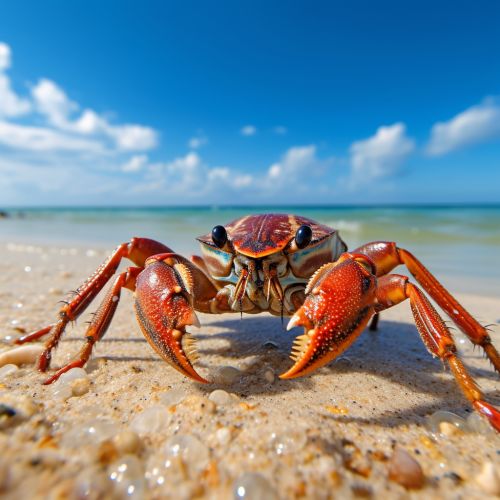The Biological Mechanisms of Animal Adaptation to Life in the Intertidal Zone
Introduction
The intertidal zone, also known as the littoral zone, is the area between the high and low tide marks on a shoreline. This unique environment presents a variety of challenges to the organisms that inhabit it, including exposure to air, changes in temperature, and varying salinity levels. As a result, animals living in the intertidal zone have developed a range of biological adaptations to survive and thrive in these conditions. These adaptations can be physiological, morphological, or behavioral, and they often involve complex biological mechanisms.
Physiological Adaptations
Physiological adaptations are changes in an organism's internal functioning that allow it to survive in its environment. In the intertidal zone, these adaptations often involve the regulation of water and salt within the organism's body.
Osmoregulation
Osmoregulation is the process by which organisms maintain an optimal balance of water and solutes in their body fluids. This is particularly important for animals living in the intertidal zone, where the salinity of the surrounding water can vary dramatically with the tides. Many intertidal organisms, such as the common periwinkle and the purple shore crab, are able to adjust their internal osmotic concentration to match that of the surrounding environment, a process known as osmoconformation.


Desiccation Resistance
Another important physiological adaptation in the intertidal zone is resistance to desiccation, or drying out. This is particularly important for animals that live in the upper intertidal zone, where exposure to air during low tide can lead to significant water loss. Many of these organisms, such as the acorn barnacle, have developed mechanisms to seal in moisture when the tide is out, such as closing their shells or producing a mucus layer.
Morphological Adaptations
Morphological adaptations are physical changes in an organism's body structure that help it survive in its environment. In the intertidal zone, these adaptations often involve the development of specialized structures for attachment, protection, and feeding.
Attachment Structures
Many intertidal organisms have developed specialized structures for attaching themselves to the substrate, which helps them resist the powerful waves and currents that can occur in this environment. For example, barnacles have developed a strong, cement-like substance that they use to attach themselves to rocks, while mussels use a series of strong, flexible threads known as byssal threads.


Protective Structures
Protective structures are also common among intertidal organisms. These can include hard shells, like those of snails and crabs, which provide protection from predators and help prevent desiccation. Some intertidal organisms, such as the sea anemone, also have specialized cells called cnidocytes that contain stinging organelles for defense.
Behavioral Adaptations
Behavioral adaptations are changes in an organism's behavior that help it survive in its environment. In the intertidal zone, these adaptations often involve strategies for dealing with the changing tides and for finding food and mates.
Tidal Rhythms
Many intertidal organisms have developed tidal rhythms, which are patterns of behavior that are synchronized with the tides. For example, some species of fiddler crabs emerge from their burrows to feed at low tide, while others, like the ghost crab, are more active at high tide.


Foraging and Mating Strategies
Foraging and mating strategies are also important behavioral adaptations in the intertidal zone. For example, some species of sea stars are able to extend their stomachs out of their bodies to feed on prey that is otherwise inaccessible. Mating strategies can also be complex, with some species, like the hermit crab, engaging in elaborate courtship rituals.
Conclusion
The intertidal zone is a challenging environment, but the animals that inhabit it have developed a range of fascinating and complex adaptations to survive. These adaptations, which can be physiological, morphological, or behavioral, are the result of millions of years of evolution and provide a fascinating insight into the diversity and resilience of life on Earth.
